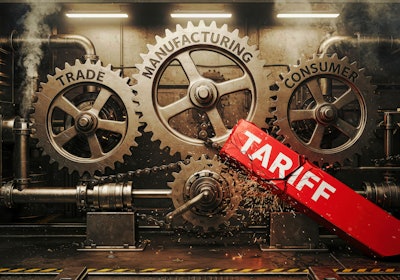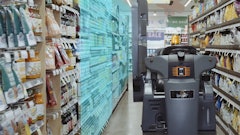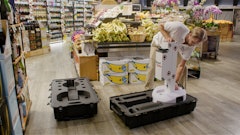
Trade tensions and potential new tariffs have created significant uncertainty in the industrial market. Manufacturers and distributors now face unpredictable import costs, while developers struggle with rising construction expenses that reduce profit margins and cause project delays.
This year's demand analysis reveals year-over-year changes in traditional retailer and 3PL, logistics and distribution demand. Traditional retailers demand has decreased by 17%, while 3PL, logistics and distribution users demand increased by over 13%, largely driven by tariffs and inventory frontloading by Asian 3PLs.
Simultaneously, occupiers have grown hesitant about long-term commitments, resulting in more short-term renewals as they evaluate how evolving global supply-chain strategies might impact their space requirements.
This year's Industrial Tenant Demand Study from JLL underscores macroeconomic trends that may have both immediate and enduring impacts from tariffs.
Key takeaways:
· The timeframe required for occupier decision-making has experienced a notable extension with occupiers staying on the market for an average of 11 months, a significant change from the 3.5 months decision-making timeline observed during the pandemic.
· Additionally, an increasing number of occupiers have implemented inventory stockpiling approaches, such as frontloading of the inventory, as protection against possible tariff implications.
· The trends of reshoring and regionalization are transforming global logistics networks, with this year's analysis showcasing manufacturing now represents over 19% of total demand. This manufacturing growth is generating new jobs and expanding supplier ecosystems, with effects expected to influence industrial market segments for the foreseeable future. This year’s report highlights a notable increase in land and purchase or build-to-suit option inquiries over time, marking a potential shift in market dynamics.
· The clear winners emerging from this uncertainty are non-China Asia and Mexico, as companies increasingly pursue China-plus-one strategies and supply chain diversification to mitigate potential disruptions. Importers facing elevated duties on Chinese goods have strategically reduced orders or diversified sourcing locations, fundamentally altering containerized import patterns from China. In response, Chinese exporters have redirected shipments to Southeast Asian countries, creating a rebalancing of global trade flows that partially offsets their market losses.
· Following an initial rush to beat new tariff implementations, American importers are now canceling or postponing orders, indicating a substantial disruption in trade patterns between these economic giants.
· Demand for warehouse and distribution is down 14.6% Y-o-Y, while manufacturing is up 9.0%. Organizations are prioritizing efficiency and cost reduction, carefully assessing inventory expenses and interest rates, with future supply chain considerations sometimes becoming the decisive factor in their real estate decisions.
· The highest demand for advanced manufacturing facilities comes from industries such as construction, machinery and materials, energy and utilities, food and beverage, consumer products, and health. Regionalization trends continue to fuel growing demand for manufacturing facilities that offer efficiency, flexibility, and proximity to the customer basis. Future site selection is expected to be influenced by markets offering abundant resources including land, power, and labor.
· In key manufacturing markets like Houston and Atlanta, land, power, and labor drive location decisions. Modern warehouse and distribution facilities are also facing higher power demands due to automation, technology infrastructure, and EV adoption.
· The Southeast region accounts for more than 24.1% of demand. Within the Southeast, Atlanta and Savannah stand as the clear market leaders, collectively representing over 43% of the region's demand. The Greenville/Spartanburg area has also established itself as a significant industrial hub, accounting for more than 13% of regional demand. 3PL, logistics and distribution companies are driving the market, generating 16.8% of total demand. The consumer products sector follows as the second most active industry vertical, responsible for over 9.3% of market demand.
· Despite ongoing fluctuations in the traditional retailer industry, the food and beverage and consumer products industries are expecting significant forward momentum in the current market. Simultaneously, projected demand grew by 12.8% for the 3PL, logistics and distribution sector while three of the five other sectors decreased year-over-year.
· Despite currently tempered activity and vacant space in existing networks, the 3PL sector has seen demand increase, driven partly by pre-election preparation from overseas operators and Asian 3PLs. This growth reflects 3PLs' evolving strategic value in navigating complex tariff landscapes, with companies increasingly relying on their specialized expertise rather than developing in-house capabilities. Border-state and regions, including Southern California, Texas, and Arizona, are gaining particular attention as businesses seek to minimize transportation distances from ports of entry, reducing transit times and enhancing supply chain resilience amid trade uncertainties.
· The food and beverage industry is experiencing robust growth fueled by multiple factors, with the Southeast region leading the charge, generating 14.9 million square feet of demand and marking a 15.7% year-over-year increase. E-commerce's normalization of online grocery shopping has heightened demand for cold storage facilities near urban centers, while supply chain vulnerabilities and geopolitical tensions have prompted regional production and just-in-case inventory approaches.




















